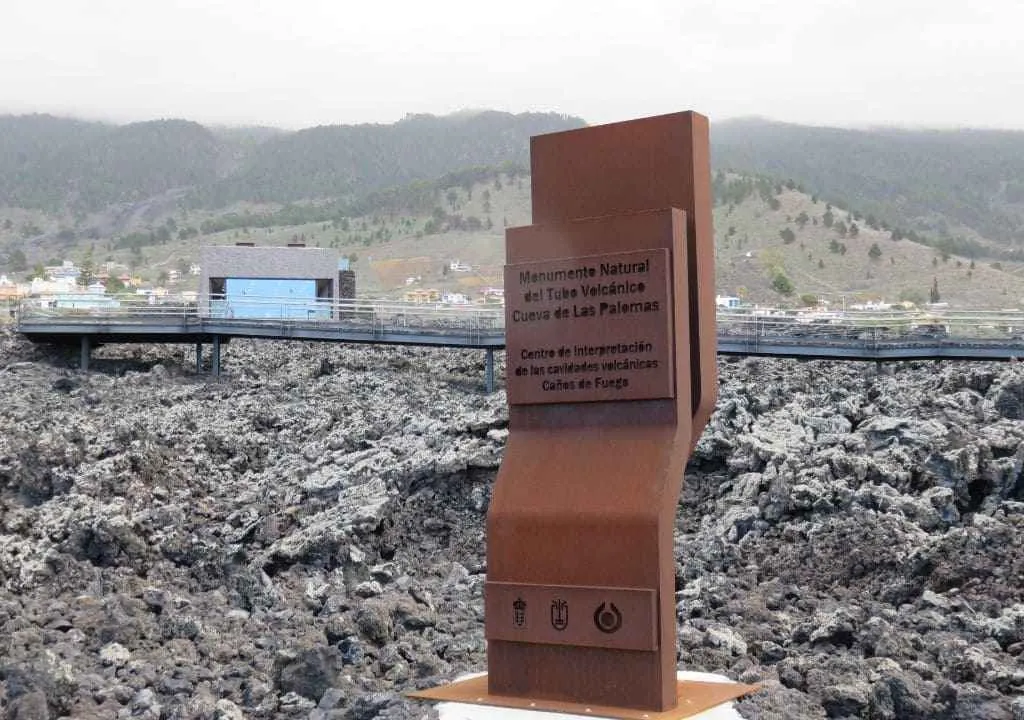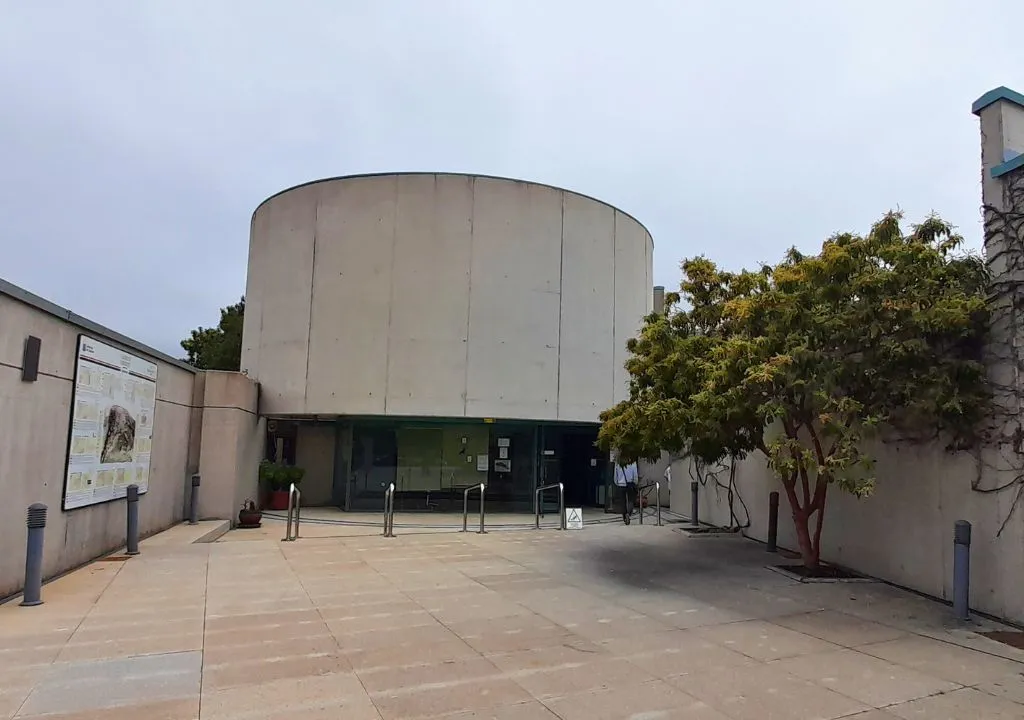Dive deep into the bowels of La Palma and unearth the mysteries that lie beneath its surface at the Centro de Interpretación de las Cavidades Volcánicas “Caños de fuego La Palma”. Located in Las Manchas, this center emerged from volcanic tubes created by the eruption of the San Juan Volcano in 1949.

Here, guests can immerse themselves in an educational and expansive exhibit detailing the geological formations birthed during and post volcanic eruptions. The exhibition employs a rich tapestry of visual and audiovisual presentations to explain the creation of the site and the distinct geological attributes of lava flows and volcanic tubes. An audiovisual room, a guided journey to the “Cueva del Vidrio”, a souvenir shop, panoramic viewing point, and a cafe ensure a complete and enlightening experience.
A stone’s throw away, across the road, lies the astounding volcanic tube, Cueva de las Palomas
Accessible via floating walkways and only with pre-booked guided tours, this tube, also known as the “tubo volcánico de Todoque”, boasts a three-meter-wide gallery that extends for 560 meters. Given its natural significance, it’s recognized as a place of interest by UNESCO and as a natural monument by the Government of the Canary Islands.

Visit the Cueva de Las Palomas
Book an excursion to visit the Cueva de Las Palomas.
What’s a Volcanic Tube?
Imagine molten lava flowing over the Earth’s surface, with the external part solidifying to form a rigid layer. Beneath this layer, the lava continues its flow until it depletes, leaving behind an empty space that takes the form of a cave or tube. Such formations are quintessential in volcanic areas, with some notable examples being the Wind Cave in Tenerife and the Cueva de Los Verdes in Lanzarote.
Fast forward to 2023, a year and a half after the eruptive activity of the Tajogaite volcano, researchers from the Volcanic Speleology Team of the Canarian Speleology Federation have embarked on expeditions into the volcanic conduits formed from that eruption. Employing drones and cutting-edge technology, their mission is to confirm if these subterranean formations, carved by lava flows, are the most expansive in all of Europe, given their apparent vastness.

The Legacy of San Juan Volcano and La Palma’s Lava Tubes
Rewind to 1949, when the San Juan Volcano erupted, leading to the creation of a labyrinth of lava tubes now accessible at the Caños de Fuego Interpretation Center. Lasting 42 days, the eruption remains one of the most significant volcanic events in the island’s history. Starting on June 24, 1949, the volcano expelled a vast amount of magma, which traveled westwards to the island’s sea at Puerto Naos and La Bombilla. Over time, this paved the way for cultivating bananas on the solidified lava platform. The solidified lava on the surface resulted in the formation of the volcanic tubes, now a prime attraction at the Caños de fuego La Palma center.
Visiting Hours for Lava tube La Palma – Caños de Fuego
MONDAY: 10 AM – 3 PM
TUESDAY to SUNDAY: 10 AM – 6 PM
Directions to the Volcanic Caves in La Palma
BY CAR:
The Caños de Fuego Interpretation Center is situated on the El Hoyo Todoque road in Las Manchas. To get there, follow the new coastal road built atop the lava following the recent volcanic eruption. The center’s location makes it an easily accessible destination for those traveling by car.





